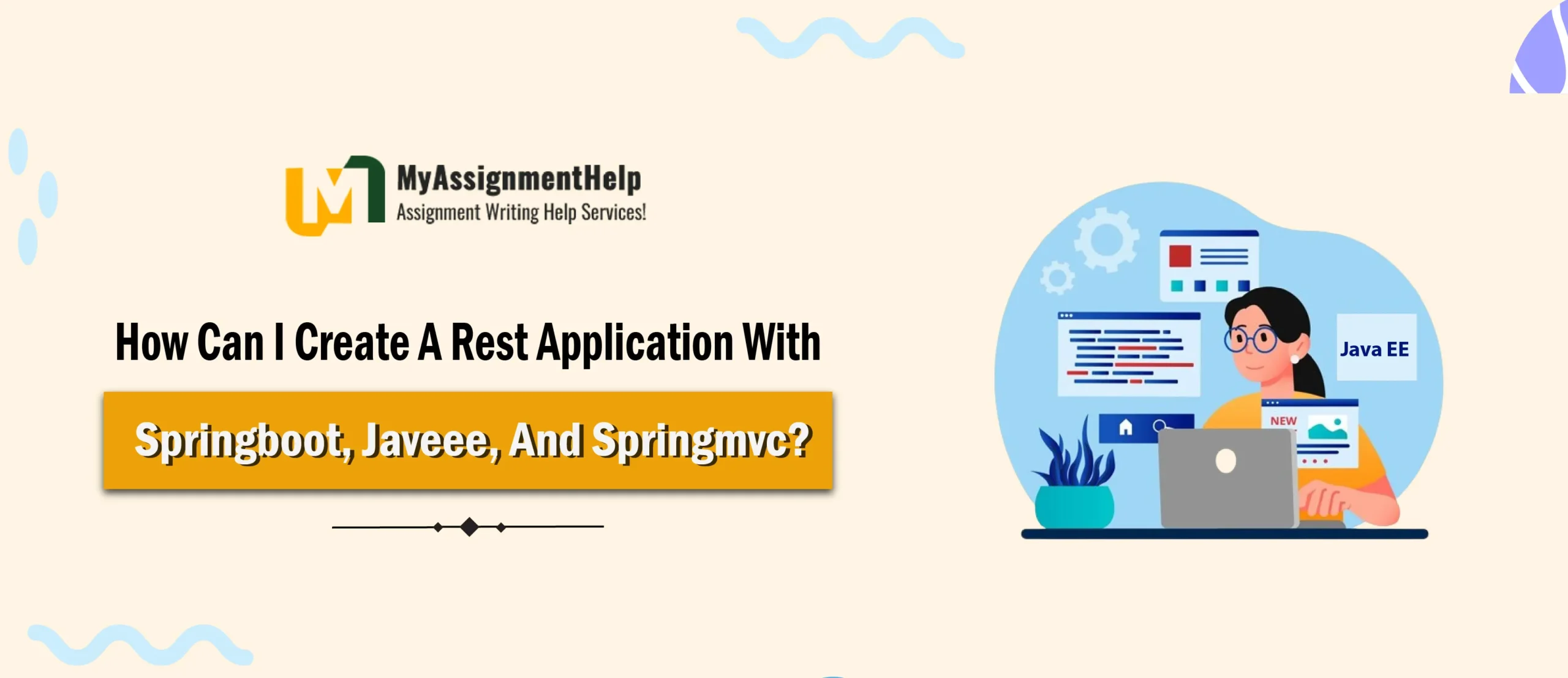In today’s fast-paced digital world, building robust and scalable web applications is essential for any business to thrive. REST (Representational State Transfer) has emerged as the go-to architectural style for developing web services due to its simplicity, scalability, and flexibility. Leveraging frameworks like Spring Boot, Java EE Assignment Help, and Spring MVC can significantly streamline the development process, enabling developers to create RESTful applications efficiently. In this comprehensive guide, we’ll delve into the intricacies of creating a REST application using these powerful technologies.

Understanding the Essentials
Before diving into the technical aspects, it’s crucial to have a solid understanding of the key components involved:
Spring Boot
Spring Boot, a part of the larger Spring ecosystem, simplifies the process of building production-ready applications. It offers out-of-the-box configurations, eliminating the need for boilerplate code, and provides a range of features for developing web applications effortlessly.
Java EE (Enterprise Edition)
Java EE, now known as Jakarta EE, provides a robust platform for developing enterprise-level applications. It offers a set of APIs and runtime environments for building scalable, secure, and portable applications, making it ideal for REST application development.
Spring MVC
Spring MVC (Model-View-Controller) is a powerful framework within the Spring ecosystem, specifically designed for building web applications. It follows the MVC architectural pattern, separating the application into three interconnected components to promote better code organization and maintainability.
Setting Up Your Development Environment
To kickstart your REST application development journey, you need to set up your development environment. Here’s a step-by-step guide to get you started:
- Install Java Development Kit (JDK): Ensure that you have the latest version of JDK installed on your system. You can download it from the official Oracle website or use OpenJDK, an open-source alternative.
- Choose an Integrated Development Environment (IDE): Select an IDE that suits your preferences and workflow. Popular choices include IntelliJ IDEA, Eclipse, and NetBeans, all of which provide excellent support for Spring Boot and Java EE development.
- Create a New Spring Boot Project: Use Spring Initializr or your IDE’s built-in tools to create a new Spring Boot project. Include dependencies for Spring Web MVC, which will enable you to build RESTful web services.
- Configure Your Project: Customize your project settings, such as package structure, project name, and build configuration. Ensure that your project is configured to use Java EE APIs if you plan to leverage Java EE features.
Building Your RESTful Application
Now that your development environment is set up, it’s time to start building your RESTful application. Follow these steps to create a basic REST API using Spring Boot and Spring MVC:
- Define Your Domain Model: Identify the resources that your application will manage and create corresponding domain classes. These classes represent the entities in your system and encapsulate their properties and behaviors.
- Implement Business Logic: Implement the business logic for your application within your controller methods or delegate it to service classes. Ensure that your logic adheres to RESTful principles, such as statelessness and resource-based interactions.
- Handle Request and Response Payloads: Use data transfer objects (DTOs) to represent request and response payloads exchanged between clients and your REST API. Utilize frameworks like Jackson for JSON serialization and deserialization.
- Add Validation and Error Handling: Implement validation for incoming requests using annotations like @Valid and handle errors gracefully by returning appropriate HTTP status codes and error messages.
- Test Your API Endpoints: Write unit tests and integration tests to verify the functionality of your REST API. Use tools like JUnit and Mockito to simulate HTTP requests and validate responses.
Deploying Your Application
Once you’ve built and tested your RESTful application locally, it’s time to deploy it to a production environment. Here are the steps to deploy your application using Spring Boot:
- Package Your Application: Build a deployable JAR or WAR file for your Spring Boot application using Maven or Gradle. Ensure that all dependencies are included in the final artifact.
- Choose a Deployment Platform: Select a deployment platform that meets your requirements, whether it’s a traditional application server like Apache Tomcat or a cloud-based platform like Heroku or AWS Elastic Beanstalk.
- Configure Deployment Settings: Configure any necessary deployment settings, such as environment variables, database connections, and security configurations. Ensure that your application is ready for production use.
- Deploy Your Application: Upload your packaged application to the chosen deployment platform and start the deployment process. Monitor the deployment status and troubleshoot any issues that may arise.
- Test Your Production Environment: Conduct thorough testing in your production environment to ensure that your application behaves as expected under real-world conditions. Perform load testing, security testing, and user acceptance testing to validate its performance and reliability.
Conclusion
In conclusion, creating a RESTful application with Spring Boot, Java EE, and Spring MVC is a rewarding endeavor that enables you to build powerful and scalable web services. By leveraging the features and capabilities of these technologies, you can streamline the development process and deliver high-quality applications that meet the needs of your users.
If you’re looking for Java EE assignment help or assistance with Java Assignment help, don’t hesitate to reach out to the best assignment helpers who can provide expert guidance and support throughout your development journey. With their assistance, you can conquer any challenges and excel in your endeavors as a Java developer. Happy coding!





